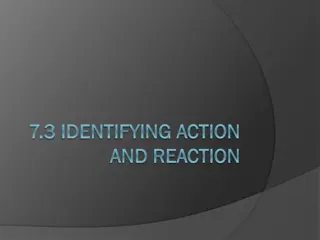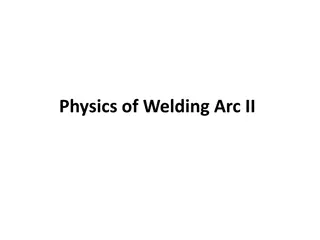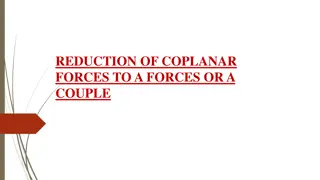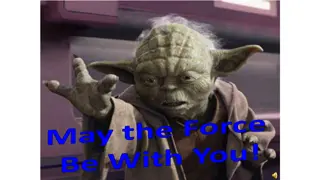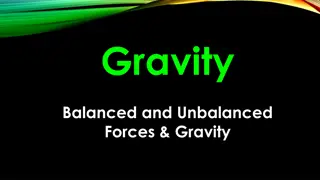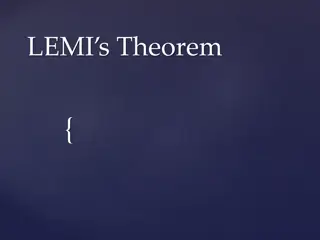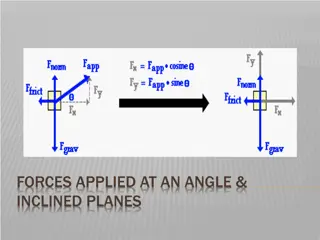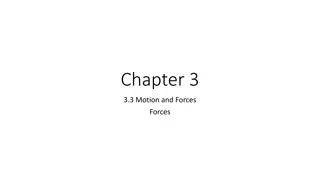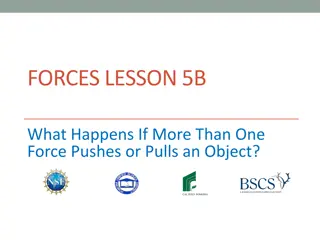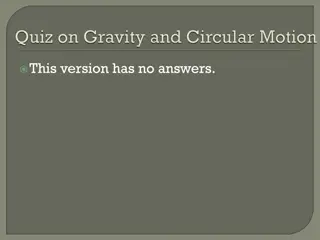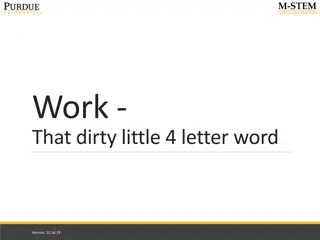Understanding Forces: Drawing Invisible Pushes and Pulls
Delve into the concept of forces in science, learning how to draw and represent pushes and pulls even when they are not visible. Explore key ideas about forces, including gravity, and engage in activities to understand how forces cause movement in objects.
Download Presentation

Please find below an Image/Link to download the presentation.
The content on the website is provided AS IS for your information and personal use only. It may not be sold, licensed, or shared on other websites without obtaining consent from the author. Download presentation by click this link. If you encounter any issues during the download, it is possible that the publisher has removed the file from their server.
E N D
Presentation Transcript
FORCES LESSON 2A How Can We Draw the Forces Pushing or Pulling an Object When We Can t See Them?
Our Focus Question from Last Time What makes something start to move? How did you answer this question? What did we call the actions that cause something to move?
Key Science Ideas In science, a force is a push or pull between two objects that causes something to move. In most cases, two objects must touch to exert a force that causes motion. What force doesn t require two objects to touch?
Key Science Ideas In science, a force is a push or pull between two objects that causes something to move. In most cases, two objects must touch to exert a force that causes motion. Gravity is a special type of force that pulls an object toward Earth without requiring it to touch the ground.
Todays Focus Question How can we draw the forces pushing or pulling an object when we can t see them?
Talk about Your Drawings Discuss these questions for each drawing with a partner: 1. Can you see a force in the drawing? 2. What part of the drawing lets you know that something has started to move? 3. How did you represent a force in your drawing? 4. Can you tell if a push, a pull, or gravity caused something to move in the drawing? 5. Can you tell how strong the force is that caused something to move?
Describe the Forces 1. Can you see a force in the drawing? 2. What part of the drawing tells you that a force is acting on an object? 3. How is the force represented in the drawing (with lines, arrows, or something else)? 4. What object is exerting a force on another object? 5. Is the force pushing or pulling the object? How can you tell? 6. Does the drawing show the direction and strength (size) of the force?
Investigation: Drawing Forces When a pushing force was exerted on the cart, in what direction did it move? How could we show in a diagram the direction of the force (the push) on the cart? How could we show in a diagram how strong the force was (a small, weak push or a big, strong push)?
Investigation: Drawing Forces Remember: The foam arrows show both the strength and the direction of a force. What did you notice about the arrow our volunteer chose to represent the strength of the force pushing the cart? What does the length of the arrow mean? How did our volunteer show the direction of the force that made the cart move?
Investigation: Drawing Forces Key science ideas: Arrows show both the strength and the direction of a force. The direction of the arrow shows the direction of the force. The length of the arrow shows how strong the force is. A shorter arrow represents a smaller, weaker force, and a longer arrow represents a larger, stronger force.
Todays Focus Question How can we draw the forces pushing or pulling an object when we can t see them? Challenge question: How can we use diagrams to represent the forces acting on this cart? Photo courtesy of Cal Poly Pomona
Using Diagrams to Represent Forces Challenge question: How can we use diagrams to represent the forces acting on this cart? Turn and Talk: Describe the force that the arrow represents in each diagram. What is the direction of the force? How strong is the force? How do you know? Photo courtesy of Cal Poly Pomona
Lets Summarize! Key science ideas: A force is a push or pull between two objects that causes something to move. In most cases, two objects must touch to exert a force that causes motion. The exception is gravity, which is a special type of force that pulls an object toward Earth without requiring the object to touch the ground.
Lets Summarize! Key science ideas: Scientists use arrows show the strength and direction of a force. The direction of the arrow represents the direction of the force. The length of the arrow represents the strength of the force. A shorter arrow represents a smaller, weaker force, and a longer arrow represents a larger, stronger force.
Next Time What happens if more than one force acts on an object at the same time? In what direction would the object move, or would it move at all? How would we use arrows to represent more than one force acting on an object? We ll explore these questions next time.



